FREE SHIPPING ACROSS MIDDLE EAST – ONLINE ONLY
Faster ACL Recovery: Unleashing the Power of Flywheel Training
Fredrik Correa M.D., CEO of Exxentric
9/17/20244 min read
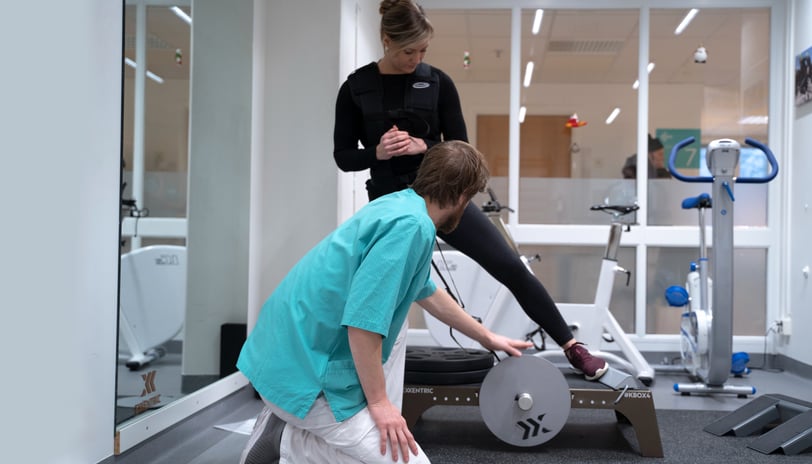

Is there a breakthrough in ACL recovery? Emerging evidence suggests that flywheel training could be the key to accelerating recovery post-ACL reconstruction. In this article, CEO, Fredrik Correa, explores how a 6-week kBox protocol has helped professional athletes regain leg strength and explosive jump power, outperforming traditional rehabilitation methods.
The potential is game-changing. Athletes undergoing this advanced training showed superior results across key performance metrics, compared to those using conventional rehab, with no dropouts in the study. Unbelievable? The results speak for themselves.
Why ACL Rehabilitation Deserves Your Attention
While the headline might sound like clickbait, the content is crucial for anyone involved in the rehabilitation of ACL-reconstructed patients, or coaches working in high-risk sports. Let’s dive in:
The ACL (anterior cruciate ligament) is essential for knee stability, preventing forward movement of the tibia relative to the femur and controlling excessive knee rotation. High-impact sports—think soccer, basketball, handball—rely heavily on the ACL for movements like deceleration, direction changes, and jump landings. As a result, ACL injuries are all too common.
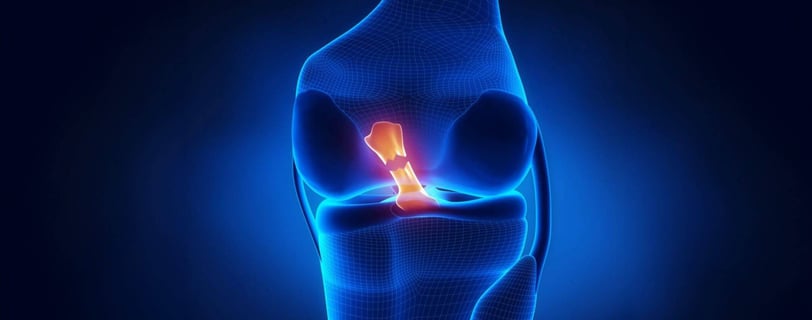

Recovering from an ACL tear typically involves surgery, followed by a demanding rehab process. But recovery isn’t just about healing the ligament. It’s about restoring the strength, power, and balance necessary for peak performance on the field.
This is where the challenge lies—especially when the athlete or patient often experiences significant declines in muscle strength, power, and neuromuscular control.
Historically, time post-surgery was the primary benchmark for return-to-sport (RTS) decisions. But today, it’s about function. Functional testing—assessing strength, power, balance, and control—has become the gold standard. Tests like the single-leg hop, triple crossover hop, and vertical jump now guide RTS timelines.
Recent innovations in training, particularly eccentric strength training, have shown great potential in optimizing recovery. Eccentric exercises, which focus on muscle lengthening under tension, could offer the neural and muscular adaptations needed for faster, more effective rehabilitation. However, until now, eccentric training during mid to late-stage ACL rehab has been under-explored.
This gap in research led to a study designed to determine whether eccentric training truly offers an edge over traditional methods for professional athletes in the final stages of ACL rehabilitation.
Study Overview: Eccentric Flywheel Training vs. Traditional Strength Training
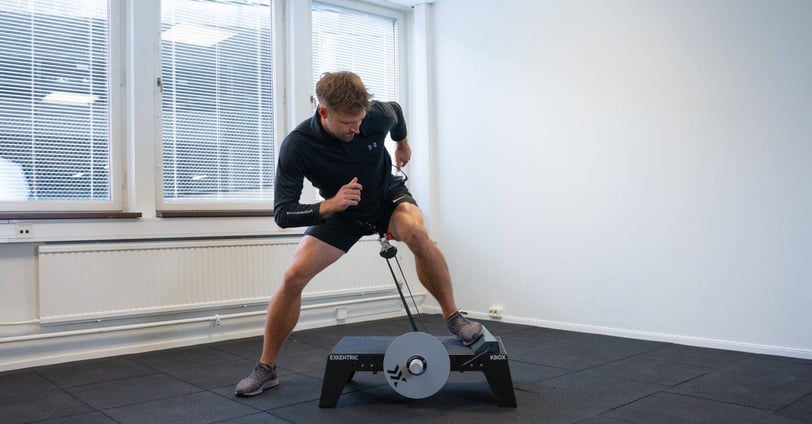

This study, conducted by Marko D. M. Stojanovic and colleagues, compared two distinct approaches: eccentric-oriented strength training using flywheel technology and traditional strength training. It aimed to determine which method produced better results in late-stage ACL rehabilitation for professional athletes.
Subjects:
22 professional athletes (14 males, 8 females) from sports like soccer, basketball, and handball participated. All were around 5 to 6 months post-ACL reconstruction with a bone-tendon-bone graft and had already cleared early-stage rehabilitation hurdles. These were first-division athletes, committed to returning to peak performance.
The athletes were divided into two groups: one undergoing traditional strength training (control group) and the other focusing on eccentric-oriented training using Exxentric’s kBox flywheel devices (experimental group). Both groups followed a six-week program with matched volume and session numbers.
Rehabilitation Protocol
Over six weeks, both groups trained six days per week, with strength sessions occurring two to three times weekly. The difference? The experimental group (ECC) used Exxentric flywheel devices to overload the eccentric phase of their exercises, while the control group (CON) used traditional free weights at 80% of their 1RM.
Beyond strength training, participants also engaged in aerobic work, upper-body strength, agility, and landing skills, with recovery sessions built in weekly. Both groups progressed in intensity over time, with deloading phases integrated to support recovery.
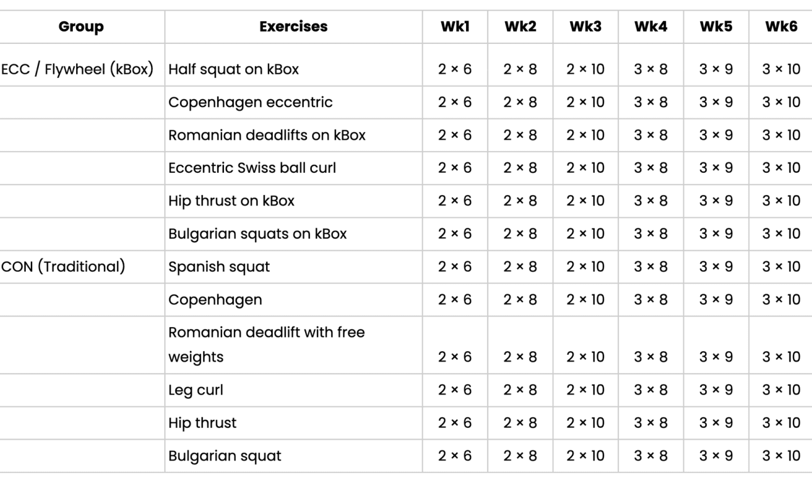

Key Results
The results were clear: eccentric-oriented training significantly outperformed traditional strength training. Here are the highlights:
Isometric Strength Gains (Injured Leg): The ECC group improved by 27.1%, compared to the CON group’s 18.1% gain.
Vertical Jump (CMJ): The ECC group saw a 12.9% improvement versus the CON group’s 6.7%.
Single-Leg Jump (Injured Leg): The ECC group improved by 23.8%, outperforming the CON group’s 13.7%.
Single-Leg Hop (Injured Leg): The ECC group showed a 23.9% improvement, while the CON group improved by 8.1%.
Triple Hop (Injured Leg): The ECC group improved by 14.3%, compared to the CON group’s 5.3%.
Discussion
The results reinforce what we’ve seen anecdotally with athletes and patients using Exxentric devices: eccentric-oriented training creates a distinct edge in ACL rehab. Not only did the ECC group show greater gains in strength and performance, but these gains translated directly to functional tasks like jumping and hopping—critical indicators of readiness for sport.
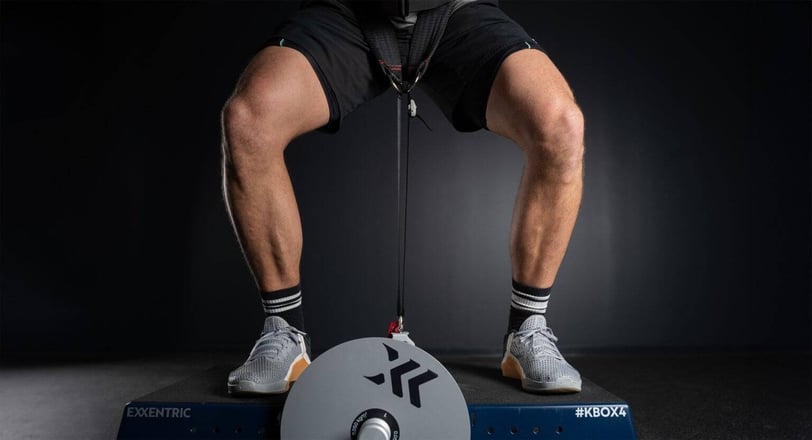

What does this mean for you? If you’re working with late-stage ACL rehabilitation, incorporating eccentric-oriented strength training could be a game-changer. The unique stimulus provided by flywheel training enhances neural and muscular adaptations, accelerating recovery and helping any athlete return to the field stronger, faster, and better prepared for the demands of their sport.
Conclusion
This study’s findings are a testament to the power of eccentric flywheel training. Over six weeks, professional athletes in late-stage ACL rehab saw greater improvements in strength and jump performance using Exxentric devices compared to traditional methods. The results are clear: eccentric-oriented training isn’t just effective—it’s superior.
Are you ready to unlock the future of ACL rehabilitation? Your athletes are not looking for average outcomes. Flywheel training is the key to a quicker comeback.


Fredrik Correa
M.D., CEO of Exxentric
Follow @fredrik_correa
